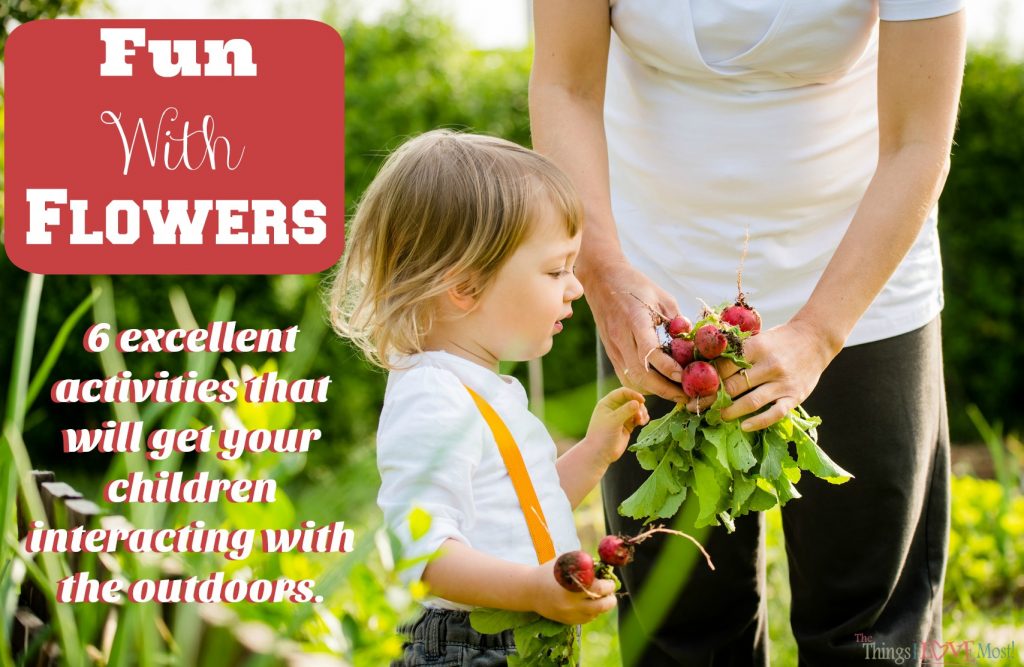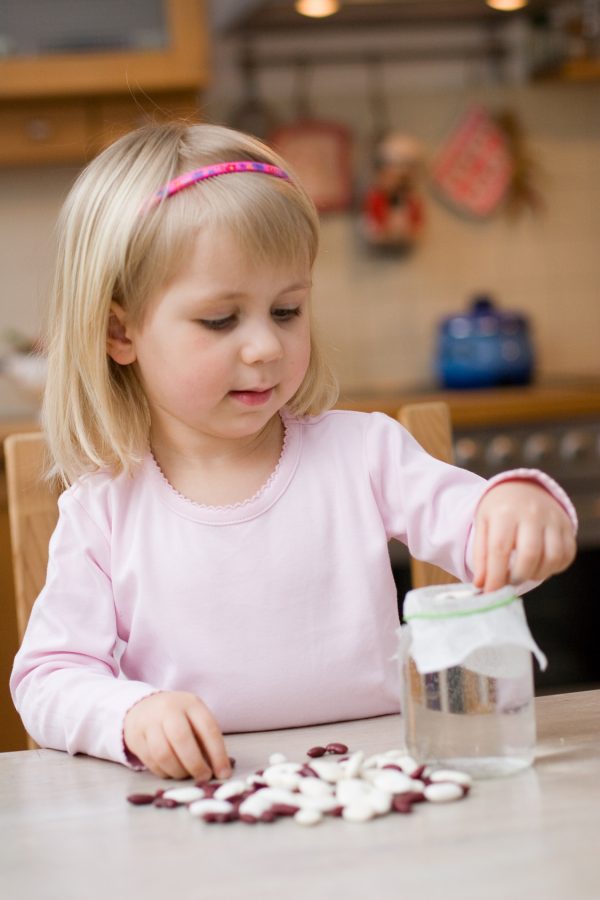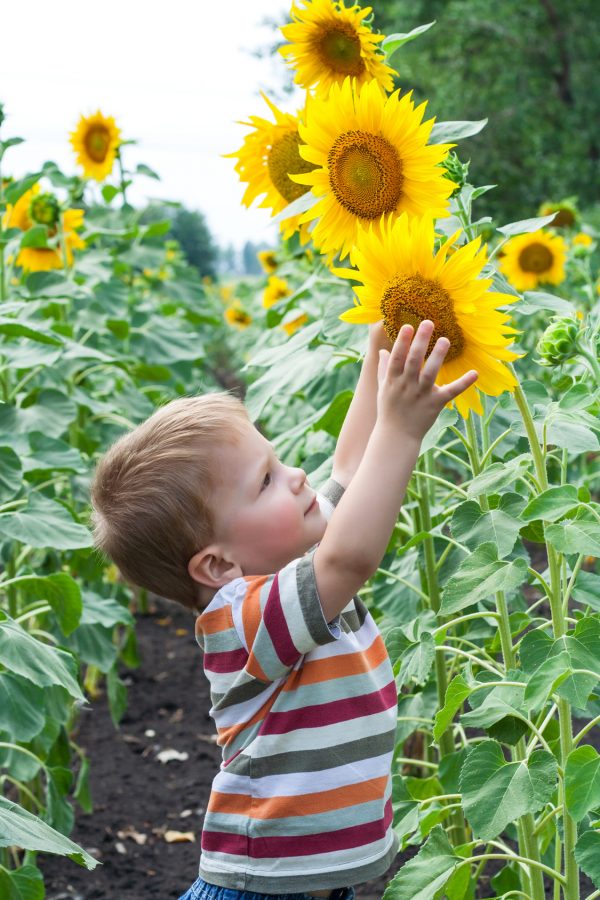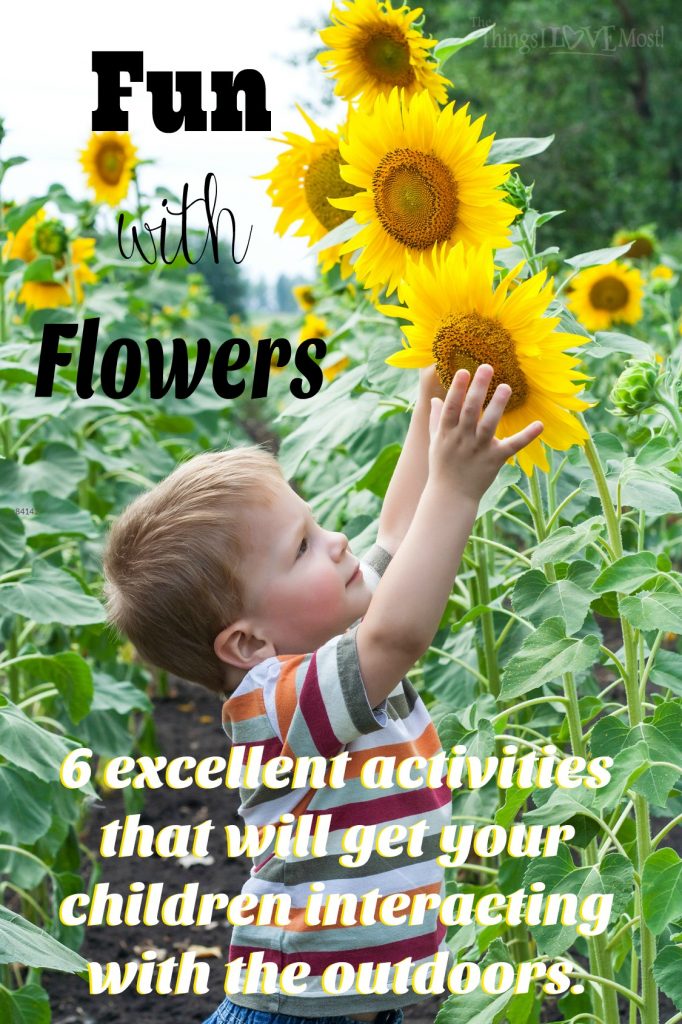My kids love to explore the outdoors. One of their favorite things to do is just be outside. Lately, at least where we live the temperatures have been record highs and playing outside happens only in the morning or the evening, and even then it’s been hard to get them to stay outside. I am excited to share with you this great guest post by Christine Hill about how to get your kids outside and stay out there by exploring flowers and all kinds of plants!
Fun with Flowers: Get Your Kids Outside by Christine Hill
Just because school’s out doesn’t mean that your kids have to stop learning. But this time, you get to guide them in fascinating, fun, hands-on experiments using summer’s best gift: plants!
There are a million ways to make the great outdoors shine for your children. In learning more about the natural world, your children will spend more time outdoors this summer, instead of in front of a screen. They’ll become involved in their own health and nutrition. And, of course, they’ll learn skills and concepts that will serve them well in the future!
Not only does understanding scientific and agricultural concepts contribute to schooling in the future and self-sufficiency skills, but connecting with nature can be good for the mental wellbeing of your children. Horticultural therapy has been used for stress relief, as well as treatment of mental disorders. Numerous studies prove that green spaces, and interaction with growing things improves memory, mood, and attention span.
Fun with Flowers: Get Your Kids Outside
Here are 6 excellent activities that will get your children interacting with the outdoors…
Sprouts in the Kitchen
Certain plants require almost no care and yield amazing early growth. Bring them into your kitchen in a glass jar in order to observe sprouting in all its stages. Here are some popular examples:
Avocado: This is best done by suspending the pit over a glass jar full of water, by sticking three toothpicks in its side and resting it on the mouth of the jar. Make sure to place it broad side down. The water should cover the bottom inch of the seed, and the jar should be in an area with indirect light. It should only take a few weeks for you to see both a root and a sprout.
Beans: Beans are fun to watch because they sprout so fast. It’s easy to watch their growth in a glass jar, too. Take a paper towel, crumple it and stuff it into the jar. Place 3-4 beans inside of the jar, and then spray the paper towel with a water spritzer. Place the jar in a sunny area and spritz it again each day. It only takes two weeks to see growth.
Respiration and Transpiration Experiments
One of the important functions of every plant is respiration, or breathing. Plants combine the sugars acquired through photosynthesis with oxygen to create energy for growth and life. Carbon dioxide and water are byproducts of this process, and you can see both of them in two different experiments:
- To see air: Submerge a leaf or flower in water. After an hour, look for air bubbles that have formed around the edges as the plant breathes.
- To see water: Tie a plastic sandwich bag around a living branch in your yard. This works great on fruit trees with low branches and lots of leaves. Each day, go outside and see how much water has accumulated as the plant breathes in and out.
- To see plants absorb water: This one is always fun because you can play with colors. Place a plant in a glass of water and food dye. This works for flowers like carnations, stalks of celery, and even cabbage leaves. Just try to find something with a light color so you can see the change. Give the plant 24 hours and watch how the food dye is absorbed and incorporated into the plant. Within a day, you’ll have multicolored flowers, stalks, and leaves. You can switch up the experiment by splitting the stem in two and sticking it in two differently colored glasses of water.
Plant a Vegetable Garden
One tried and true teaching technique for kids is a backyard vegetable garden. Although this requires mor work and investment, it’s also a project that pays off in a big way. Kids will love watching their plants grow, and eating the fruits of their labors when the harvest comes in. Just remember to use simple plants that grow well in your area. Some suggestions for easy starts are radishes, carrots, and squash. Let each child pick a plant, or a patch of ground for which they get to be responsible. Make sure that you’re consistent with watering and weeding. Check out more ideas for easy plants and ways to get kids involved here.
Just remember to use simple plants that grow well in your area. Some suggestions for easy starts are radishes, carrots, and squash. Let each child pick a plant, or a patch of ground for which they get to be responsible. Make sure that you’re consistent with watering and weeding. Check out more ideas for easy plants and ways to get kids involved here.
Make a Special Garden to Engage the Senses
Build a sensory garden where your kids can enjoy different smells, textures, and colors of plants. You might include fragrant herbs like basil and mint, soft leaves like lamb’s ear and Italian parsley, and beautiful colors like those found in snapdragons and sweet peas.
Build a Sunflower Fort
Have fun with giant sunflowers. These beasts grow amazingly fast, and can create an architecture all on their own. Create a structure like a teepee or a room for your kids to play in once the flowers grow to their full height. Even better, once the season is over, you can harvest the seeds for a snack in the coming months.

Create a Butterfly Garden
This kind of garden has a double purpose. Not only are the most attractive flowers to these animals very fragrant and colorful, but your kids will love seeing beautiful wildlife flock to your yard. Try planting lilacs, butterfly bushes, phlox, and zinnias.




